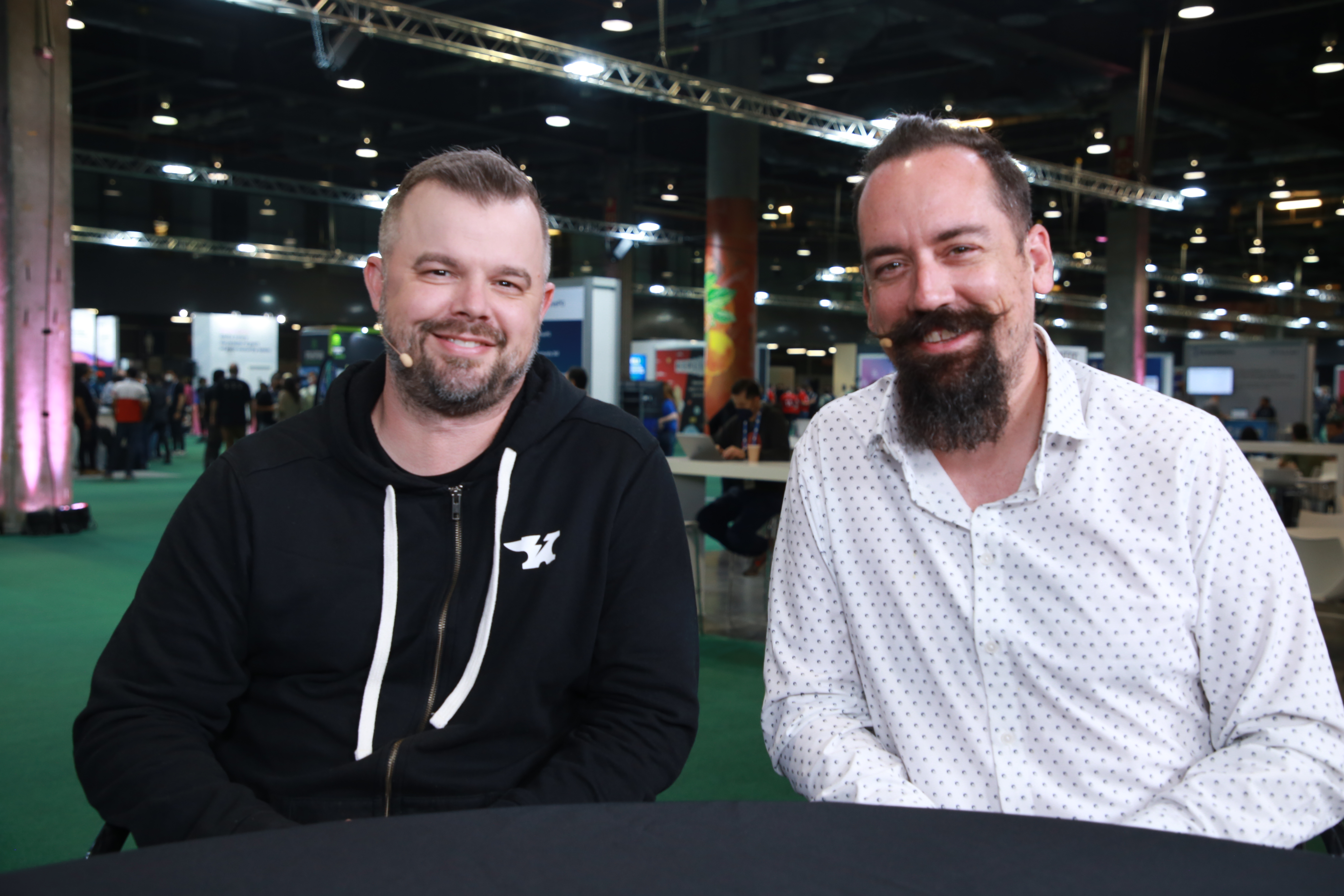 NEWS
NEWS
 NEWS
NEWS
 NEWS
NEWS
Developers today have access to more compute and storage resources than ever before. However, with great power comes great responsibility– and, more importantly, considerable cost.
StormForge’s raison d’etre drives operational efficiency by helping companies ascertain the optimum amount of resources needed to run applications in Kubernetes. Leaning on technologies such as artificial intelligence and machine learning, the optimization platform’s solutions ensure reduced running costs without sacrificing reliability.
“We take your raw telemetry data and essentially monitor the performance of your application,” said Patrick Bergstrom (pictured, right), chief technology officer of StormForge. “And then we can tell you, using our machine learning algorithms, the exact configuration you should be using for your application to achieve the results that you’re looking for without overprovisioning. So we reduce your consumption of CPU, of memory and production, which ultimately reduces your cost significantly.”
Bergstrom and Matt Provo (pictured, left), founder and chief executive officer of StormForge, spoke with theCUBE guest hosts Keith Townsend and Enrico Signoretti at KubeCon + CloudNativeCon Europe, during an exclusive broadcast on theCUBE, SiliconANGLE Media’s livestreaming studio. They discussed StormForge’s unique value proposition, what developers are clamoring for, and its approach to some of Kubernetes’ shortcomings. (* Disclosure below.)
While the ability to optimize K8s deployment is a nifty benefit, the long-term goal of any forward-thinking StormForge customer is optimizing applications holistically.
“We’ve always been squarely focused on Kubernetes using our core machine learning engine to optimize metrics at the application layer, which is what people care about and need to go after,” Provo explained. “That’s where StormForge comes in. And so we’re a vertically oriented solution that is absolutely focused on solving the problems within Kubernetes of portability and flexibility.”
There’s also the question of adequacy in support for legacy technologies, with Java serving a prime example. While the industry has generally phased away from it, several existing applications and microservices incorporate the technology.
“We can use any metric that you care about and work with any configuration for that application,” Bergstrom stated. “The perfect example is Java, where you have to worry about things like heap size and garbage collection tuning. The StormForge product has true machine learning, where you remove the human bias from all that.”
Developers have often struggled with the merry-go-round of buying more memory as needs expanded. With cloud resource prices now coming at a premium, simply “buying a bigger box” is no longer a feasible long-term option.
“We want to empower people to be able to sit in the middle of all of that chaos and for those trade-offs and those difficult interactions to no longer be a thing,” Provo said. “We’ve done hundreds of deployments, and never once have we met a developer who said, ‘I’m really excited to get out of my bed, come to work every day, and manually tune my application.'”
With its own user interface and analytics dashboard, developers can set their own comfort levels of observability and automation as they push their applications.
“You can be completely ‘set-and-forget,’ or you can be somewhere along that spectrum,” Provo added. “And you can say, ‘As long as it’s within these thresholds, go ahead and release the application or apply the configuration.'”
The challenges go beyond managing compute costs. To scale, companies must address the technological, financial and human resource aspects of the problem. StormForge’s objective is to remove resource constraints entirely out of the equation.
“A [customer’s] biggest option is, ‘Well, I could spend $1.2 billion to build a new [data center] if I wanted to,’ or if you had the capability to truly optimize your compute… and free up 30% of your capacity of that data center so you can deploy additional namespaces into your cluster, that’s a huge opportunity,” Bergstrom stated.
Such a degree of optimization requires the support of multiple types of datasets, fluctuating in volume across a myriad of sources. To that end, StormForge touts a data-agnostic approach.
“Especially with some of the products that we have coming, we’re integrating heavily with the [horizontal pod accelerator] to be able to handle those bursts and do it in a way that’s intelligent so as to ensure the perfect configuration for the application, regardless of factors like traffic patterns and disc size,” said Bergstrom.
‘The messier, the better,” Provo concluded.
Here’s the complete video interview, part of SiliconANGLE’s and theCUBE’s coverage of the KubeCon + CloudNativeCon Europe event:
(* Disclosure: TheCUBE is a paid media partner for the KubeCon + CloudNativeCon Europe event. Neither StormForge, the sponsor for this segment, nor other sponsors have editorial control over content on theCUBE or SiliconANGLE.)
THANK YOU